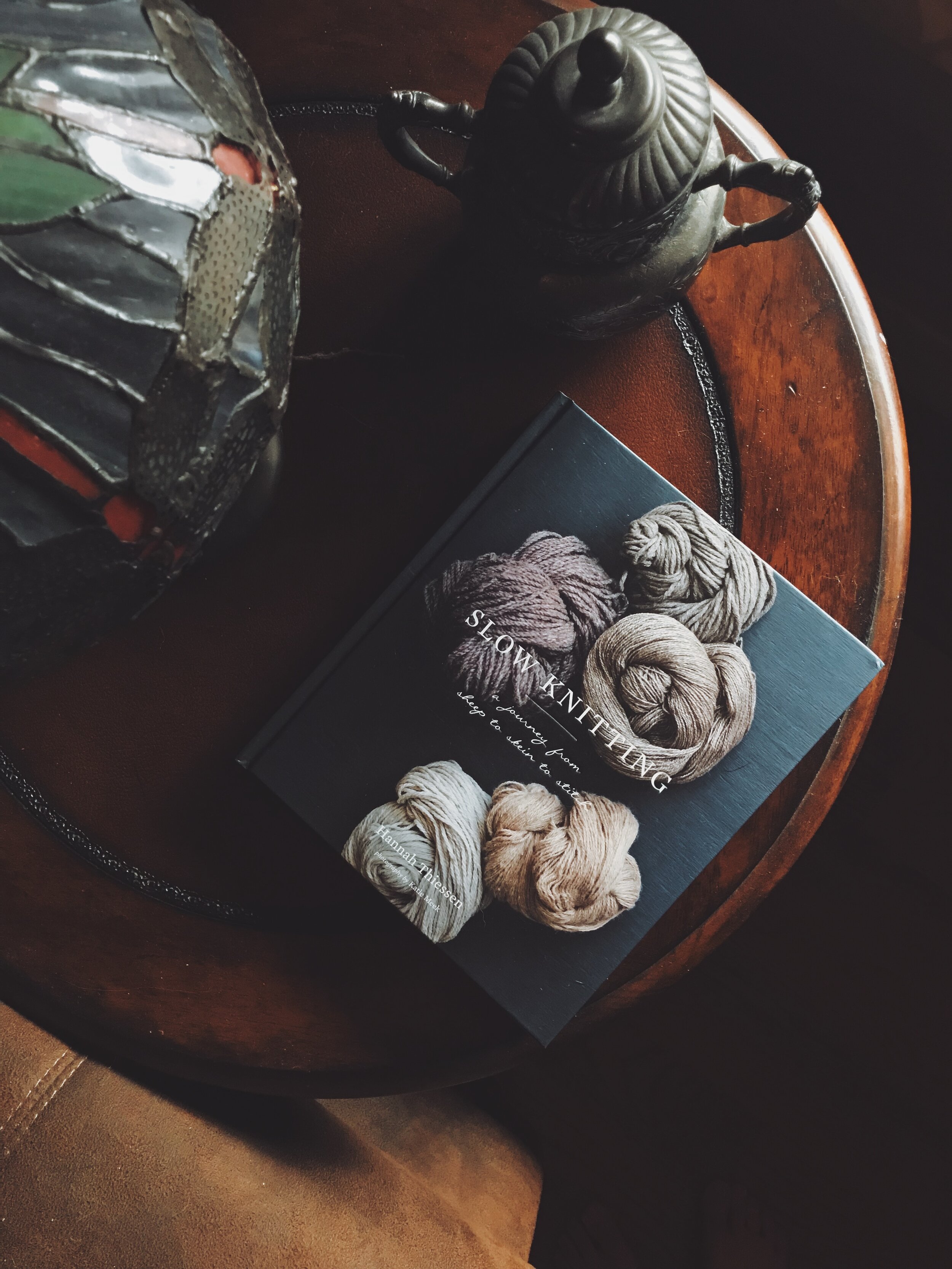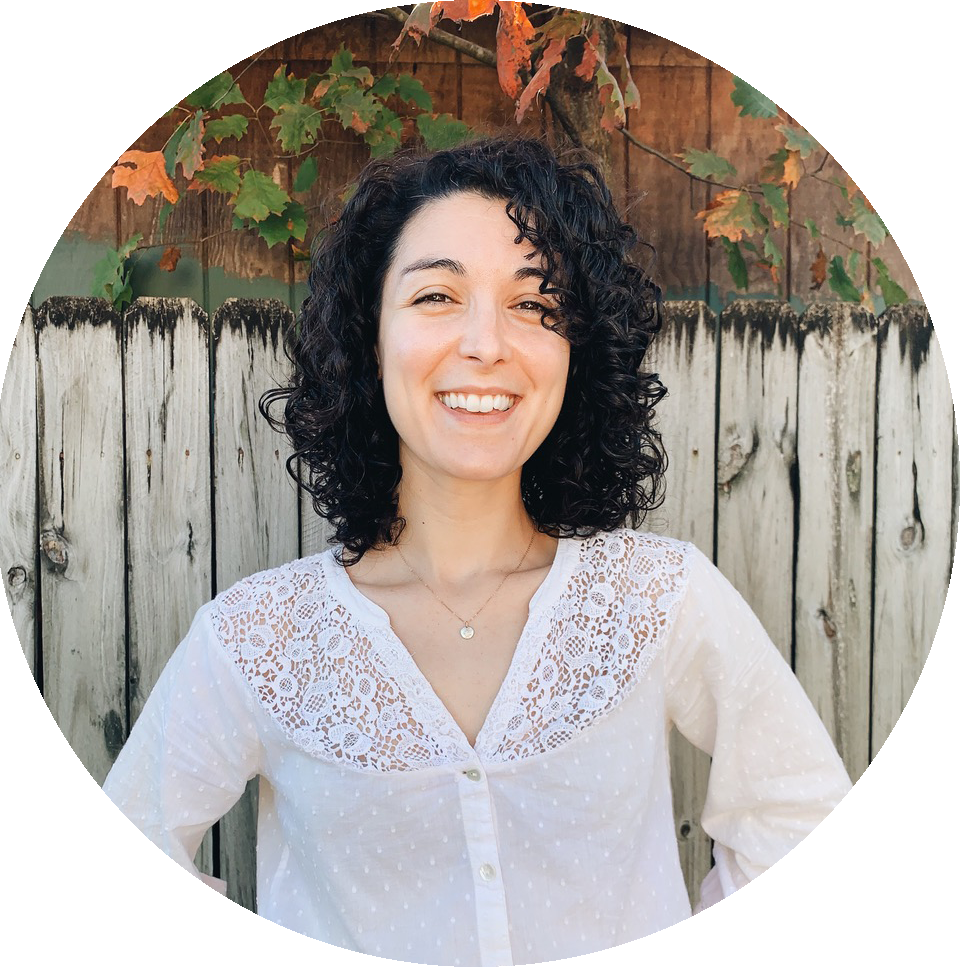Interview with Hannah Theissen: New 2020 Book Launch - Seasonal Slow Knitting
/Author and knitwear designer Hannah Thiessen discusses her creative process and her upcoming book: Seasonal Slow Knitting
I interview Hannah via email, being an avid fan of her first book Slow Knitting. The book is actually how we met — I’d recently moved to Knoxville and she was hosting a book signing at the local yarn store, Loopville. We later connected on Instagram, met up a few times, and have been wonderful friends ever since. I had the opportunity to be on set for the creation of the visual masterpiece that is Seasonal Slow Knitting, so I thought it only fitting to share Hannah and her new book with you, too.
AB | This is your second book on the topic of Slow Knitting, tell me about your creative process in developing this book:
HT | I usually start every project with a mood board. I pull together a collection of images--they might be illustrations, or artwork, fashion, interiors, photography. I usually start on Pinterest and just move anything that feels 'right' to a single spot so I can look at it en masse and get a feel for the attitude of the book.
It's such a crucial step for me to visualize the tone of the book in color and shape. I knew that some elements would be constant: Katie Starks, the photographer for both Slow Knitting books, has a very distinctive style. I knew that there would be a lot of color, but I wasn't sure which colors until I pulled together the mood board. At the same time, I made a yarn list and began sketching out ideas for patterns, ideas for what those yarns might become.
I'm really just dipping my toes into being an independent designer, so this was a big project to take on. It's very important (but sometimes difficult) not to feel a little overwhelmed. It helps to take things in bites. I would write sections over the weekends, maybe write all the related essays and guides over coffee on Sunday for a certain section, and it slowly came together. It's always pushed up to the last day, but that's just because I want to put it all together with the right level of attention.
Slow Knitting by Hannah Thiessen, photo my yours truly.
AB | What is the major difference between your first book, Slow Knitting, and this one, Seasonal Slow Knitting?
HT | Approaching your second book is really different than approaching the first one. When I set out to write the original Slow Knitting, I wanted to write something that would highlight people in the yarn industry that I had met, worked with, that had kind of shaped and instilled the values into me, in a way, that I wrote about.
So in some ways, that made Slow Knitting easier, because I had this support network that was built on the shoulders of giants: people who have dedicated their careers to yarn and built a great foundation for me to build onto for my own practice and passions, and it was about sharing what they were doing and how it inspired me.
Seasonal Slow Knitting is still a team effort, but in many ways, it was more introverted, and private, and personal. It's the product of many solitary hours, but I think that was necessary to get the final feeling I wanted.
Slow Knitting was an announcement and this book is more of a devotional--the first defined what my knitting practice would be, what it could develop into, and the second book is my path for that.
Another big difference is the approach. I've taught a bit more and spoken at some events in the last year and was able to get a lot of feedback from my readers on what they loved and what they were looking for more of. Many people are looking for ways to incorporate the ideas from the first book into their every day, and so I wrote a lot of little tips and techniques, guides--I think this book is a fairly useful book.
It's hardly a full-on reference, but it might help someone who is trying something for the first time. I wrote the patterns in a way that focused on their functionality and practicality--these are items I'll be using, and using regularly, and I think it will be the same for many readers. I'm still asking people to think about the how and the why, I've still got introductions to great yarn companies, but there's a lot more in this book that wasn't in Slow Knitting.
AB | In Seasonal Slow Knitting, you opted to design all of the included patterns. What was your decision making in different from the first book, and how did focusing solely on your own designs change your creative process?
HT | I wanted to see if I could do it--I suppose that's the simplest answer.
For almost a decade I've worked for other people in the industry, supporting companies in various things that I knew how to do--design has never been my expertise area. I have always had a passion for design, I actually went to fashion school for a little bit and thought about pursuing that, but it seemed like there were so many other needs that I could fill and do well. I've spent my career supporting and listening, learning from people who know more than I do about how to design, and market, and run a business, but it felt like I could probably branch out and try it on my own.
Writing Seasonal Slow Knitting was the first big opportunity I felt brave enough to take. I love supporting designers and I still get to do a lot of that through my work with By Hand Serial, though (I hope) some more books in the future, but it felt right to write this book knitter to knitter. I think the end result feels a little more like a conversation I might have with friends who craft, as a result, and that's not a bad thing--I wish I could spend that quality time with every reader, and this is one way that I can.
Seeds & Stems cowl pattern by Hannah Thiessen
Thusa water bottle cozy, by Hannah Thiessen
Friendship Bracelet Cardigan pattern by Hannah Thiessen
AB | Where do you draw inspiration for your original designs included in Seasonal Slow Knitting?
HT | I'm usually drawn to shapes that I feel comfortable wearing, or I use techniques that I think have a big impact but aren't particularly difficult. I've learned that while I really enjoy and respect very complex pieces of knitting, sometimes our brains need a break, and the knitting I seem to enjoy most requires a little less focus directly on every stitch.
I think this opens up more room to appreciate and experience the joy of making something and really enjoy your materials. Sometimes, the yarn dictates what it wants to become--the chartreuse yellow-green used for Seeds & Stems is a good example of this. The yarn was dyed with red onion skins and could have ended up anywhere in a color range from yellow to dark, caramel brown. We didn't know how it would end out, but the result influenced me, the color reminds me of those ultra-bright yellow buds of new spring.
Other times, a design is inspired by a need--a hot water bottle cozy, or socks that my mom will enjoy wearing. Nostalgia plays a little part of things, too, with patterns like the Friendship Bracelet cardigan. I would love to make some embroidery braided bracelets, but I don't have a use for them in this stage of my life. A sweater, though...
AB | Are you seeing much of the Slow Knitting tenets spreading through the knitting industry? Where do you think we could do better?
HT | I definitely think that slow knitting as a movement has been gaining a lot of steam. I'm seeing more yarn companies offering a variety of wools, more dyers looking for non-superwash bases, more talk about all of these wool breeds that were really only discussed in smaller circles--that's become a part of our public knitting culture.
There also is a much larger discourse about producing with the welfare of the chain in mind: the people, the farmers, the ranchers, the mill workers, the dyers. There's more consideration, more questioning instead of blind following. We're seeing consumers vote with their dollars more, and that's great.
Where do I think we could do a little better? I sometimes have problems with excuses. I hear a lot from people that the yarns are too expensive, that they don't like doing the research, how are they supposed to keep track of all of these things--that's a real concern. Not everyone has the luxury of doing yarn research as part of their job, I get that. So I feel that rather than telling people to do better, my job is probably to show them how or at least give them some resources.
I've been working on a new area of my site as a result, a Yarn Directory where you can look up different yarns and read about them. It's still in development and will probably always be updating, but I'm also planning on creating as many resources as possible for anyone looking to incorporate the ideas--at any price point. I really do believe it's possible to both do good for your craft and good for your budget, but I have to prove that, I can't just say it.
Hannah Thiessen working on the Kathryn Gail sock pattern for Seasonal Slow Knitting.
AB | What do you hope to do for readers of Seasonal Slow Knitting?
HT | My hope is that this book can be a little bit of a few different things. I'd love for the patterns to be go-to patterns for people, like, if you want to make a handwarmer, your favorite is the Sinnet Mitts. If you want to make a sock, you knit a pair of Kathryn Gail socks, that kind of thing. I think that's what any designer could hope for, to see their patterns have a new life on the needles of other knitters.
I also want the book to be useful--I know it's beautiful, Katie's photography is exceptional, everything is chosen very carefully to be pretty--but pretty things should be useful, too. I'm a firm believer in usefulness, so the book is full of little tips and tricks and guides and techniques.
Lastly, I'd love for the book to be rejuvenating. Sometimes I read something about my craft, something someone has written about wool or about dyeing or knitting, or I listen to a podcast, and it makes me want to cast on something new, it revives my knitting spirit. I hope this book is able to do that.
AB | Your book is available for pre-order now and set to publish in October 2020 - how can folks connect with you in the meantime and what can they expect to see from you in the next 3-6 months?
HT | So many surprises! I have so much up my sleeve between now and the book release, and pre-ordering is going to make sure people have access to all of them.
My newsletter list is a good place to start, and of course, I have Instagram, Facebook, Ravelry, and Pinterest. I'll be sharing little sneaks and notes and exclusive material with people all year long, and I've got some giveaways scheduled... it's going to be a very fun lead up to the book's physical launch.







